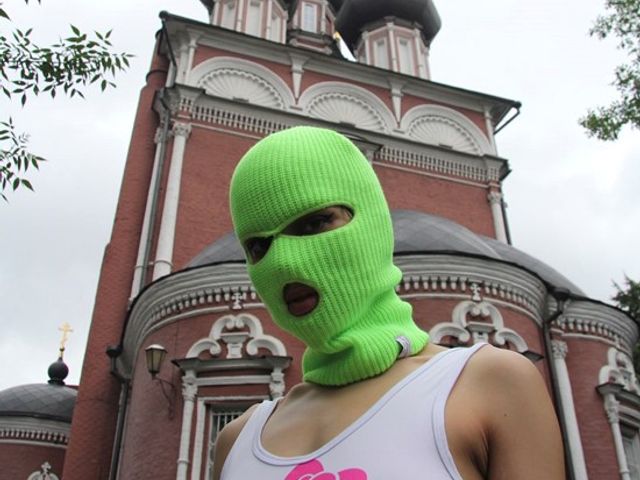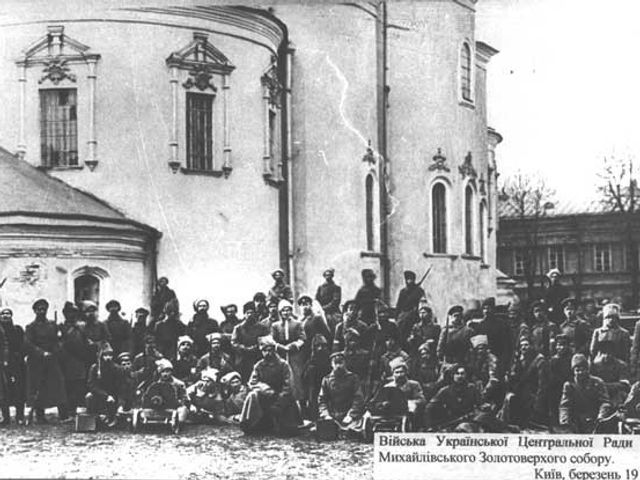Last month, on the occasion of Komar and Melamid: A Lesson in History—a retrospective curated by Julia Tulovsky on the Soviet-born artists Vitaly Komar and Alexander Melamid at the Zimmerli Art Museum at Rutgers University—Nadya Tolokonnikova, a founding member of Pussy Riot, delivered a talk to a sold-out auditorium. Her subject was totalitarianism and dissidence, and the role Pussy Riot has played in not only highlighting the crimes of Vladimir Putin—the devastating war in Ukraine; a longstanding history of censorship; human rights violations; and the persecution of political opponents—but also in directly combating his regime. In Russia, as we know, speaking out against the state is no benign act: Tolokonnikova herself spent two years in prison for “hooliganism” after an anti-Putin performance at Moscow’s Cathedral of Christ the Saviour in 2012.
Tolokonnikova’s lecture was organised as a testament not only to the legacy of Komar and Melamid’s anti-state art, which always targeted the Soviet Union, but also to suggest how dissidence lives on in the work of artists today who are in the direct crosshairs of Putin’s regime. Yet some critics have made the claim that any focus on Russian art or artists amid the war in Ukraine is a distraction from Putin’s crimes. They argue that such projects are insensitive at best, complicit at worst. Such arguments led to the last-minute postponement in January of an exhibition at New York’s Cooper Union on the early Soviet Vkhutemas school of design.
There is great power to the claim that venues that often present (or are even specifically dedicated to) Russian art should retool their programming to highlight Ukrainian artists as a stand against Putin’s invasion. That’s why, at the outbreak of the war in February 2022, the Zimmerli Art Museum extended our exhibition Painting in Excess: Kyiv’s Art Revival, 1985-1993, a survey of Ukrainian art made in the wake of the Soviet Union’s collapse. Continuing the show beyond its original closing date was our humble act of defiance.
Yet there is another side to these issues that critics seem to miss. Embedded in the claim that no Russian art should be on view today anywhere is the suggestion that Russians everywhere are partners in Putin’s crimes. The implication is that there is no division between the actions of the state and the politics of its people—that all Russians, simply by virtue of ethnic identity or the happenstance of birthplace, believe the war in Ukraine is just. For them, the state is the people.
We know this is not true; the case of Tolokonnikova is a clear example. So is Komar, whose painting The Bird and the Bear (2014-22) depicts a brutish Russian bear attacking a tiny bird representing Ukraine. These are two cracks in the façade that those in power like Putin will do anything to prevent. Maintaining a single, top-down party line is precisely the intention behind the cultural and political assimilation that the Russian state demands. From its perspective, there is only a single, unified Russian identity, which absorbs not only Ukraine (which is simply a fiction for Putin) but also any hint of internal dissidence. For Putin, his critics are insufficiently “Russian”.
Strength in multiplicity
For that very reason, internal dissent is essential to the battle against tyranny. Without it, we concede the point that identity—and therefore political positions—are forever frozen and impermeable. Yet neither identity nor politics are so simple. Komar and Melamid, it’s true, were born in the USSR. But they’ve spent more than half their lives in the US. What does this make them? Russian? Soviet? American? Komar’s father was Ukrainian. What does this mean in our calculus? With each shift in position comes new political possibilities, and it’s exactly that instability that Putin and his supporters want to fix in place. They believe only in singularity. But the strength of the anti-Putin position is a multiplicity that includes a broad coalition of actors from across the political and identitarian spectrum.
Which brings me back to a broad agreement I have with critics of my position. They are right to suggest that championing artists of various other ethnic and political backgrounds gives us an opportunity to stake a claim against cultural and political imperialism. Yet the stark binary they suggest—Russian or non-Russian—is not only too simple, it also plays directly into the hands of our collective enemies. Instead of or, we should insist on and. We only win when we build bridges between one another.
- Maura Reilly is director of the Zimmerli Art Museum at Rutgers University in New Jersey




